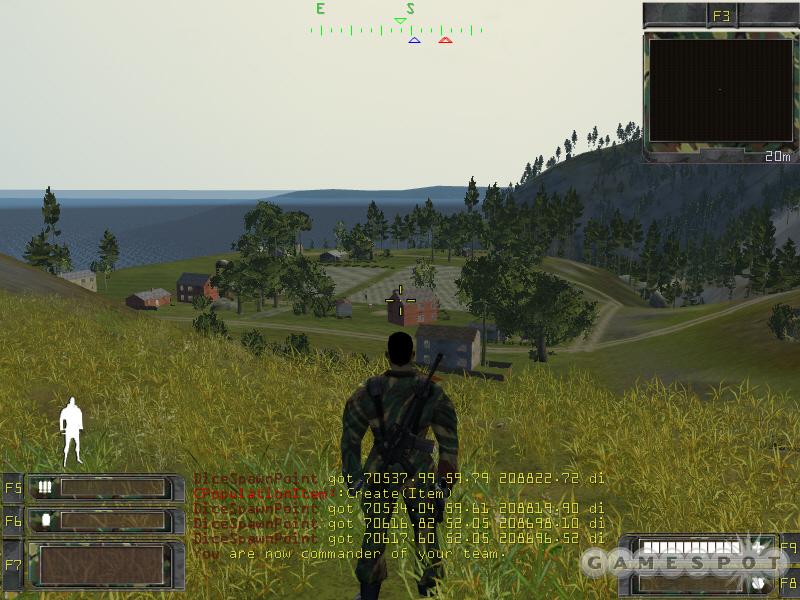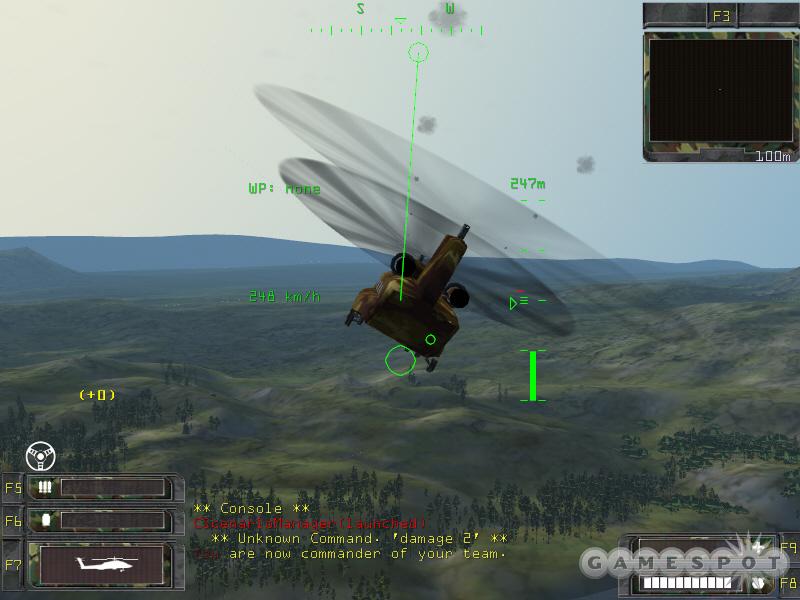Soldner: Secret Wars Impressions
Soldner is a sprawling team-based multiplayer shooter. We've played through an early version of the game and have much to relate.
In terms of team-based multiplayer shooters, Soldner: Secret Wars is often compared to Battlefield 1942 and Operation Flashpoint. In fact, it bears an uncanny similarity to the latter because, like Flashpoint, Soldner is a semirealistic shooter set in a gigantic virtual countryside. However, while Flashpoint is content to model a few fictional islands in the Atlantic, Soldner models a vast tract of Eastern Europe that measures a whopping two million square miles. In theory, every square foot of this area can be traversed. Fortunately for us, we were recently able to get our hands on an early version of the game and have much to report.

Set in the near future, Soldner depicts a world where the great powers settle their differences not with armies but with a handful of mercenaries and special forces. However, Soldner lacks the story-driven, mission-based single-player campaign that's at the heart of Flashpoint. The single-player mode in Soldner consists of randomly generated missions in which you're tasked with either destroying a certain item or building, or you're charged with delivering or extracting a certain character. Upon successful completion of a mission, you're rewarded with cash, weapons, vehicles, or a piece of equipment that you can use for future missions.
You start each mission at your base, where you can requisition vehicles and equipment. Vehicles are vital when you consider the distances in the game. In fact, walking to an objective can literally take hours, so it's obviously easier to jump into a helicopter or jeep. You also start with a handful of allies, whom you command through a point-and-click map interface that's similar to most real-time strategy games. However, the pathfinding for these characters is spotty at best, as they often get caught behind obstacles. Hopefully, developer Wings Simulations can address this before the game ships.
While you're on foot, you can switch between first-person and third-person views. Surprisingly, the game seems to play better from the third-person view rather than the traditional first-person view. From the first-person perspective, movement seems somewhat awkward, and it lacks the peripheral vision that a third-person view allows. Military fans will be happy to know that each weapon has iron sights, but they're rendered in silhouette rather than in 3D.
Soldner's multiplayer gameplay seems to be the game's most promising feature. Up to 32 players can join a server, and 128 players can potentially play on a dedicated Linux-based server. Like Battlefield 1942, the key to multiplayer will be vehicles. There's a wide variety in the game, representing both NATO and former Warsaw Pact designs, and each vehicle has individual handling characteristics. For example, the lumbering Chinook transport helicopter is slow, whereas the swift Comanche scout helicopter seems nimble in comparison. The vehicle physics still seem like they need a bit of work because--as we noticed while playing through our preview version--wheeled vehicles have a tendency to bounce off of obstacles like rubber balls, and their controls seem a bit too touchy. Camera controls also seem a bit too sensitive, as a simple nudge would send the camera swinging in that direction.
The version of Soldner we played seemed very demanding on hardware. We played on a high-end 3GHz system, and frame rates chugged until we turned off all shadow effects. Doing so smoothed out frame rates considerably, but we still found ourselves toning down the detail levels on low- and midrange machines. The developer seems to have done a great job of improving the frame rates from the last time we saw the game, but hopefully the team can optimize the engine a bit more before the game ships. 
One of Soldner's most interesting features is that virtually every object in the game is destructible, and all weapons have penetration value, which means you can literally shoot through walls if your weapon is powerful enough. Though this adds substantially to your CPU's burden of processing, it does add some interesting game possibilities. For instance, you can use a tank to blow a hole in the side of a building, subsequently creating an opening for your infantry. Furthermore, you may even jump out of your seat the first time an explosion knocks a destructible tree down next to you. The physics engine in the game keeps track of everything, so if you run down too steep a slope, not only will you tumble, but you'll drop your rifle, thus leaving you defenseless. Or if you blow up a Humvee, the parts will even fly into the air and rain back down to earth.
There's an audience out there for team-based, realistic shooters, and Soldner is certainly an ambitious attempt to reach out to these fans. The game is scheduled to ship during the first quarter of the year, and we'll keep you up to date with any developments.
Got a news tip or want to contact us directly? Email news@gamespot.com
Join the conversation